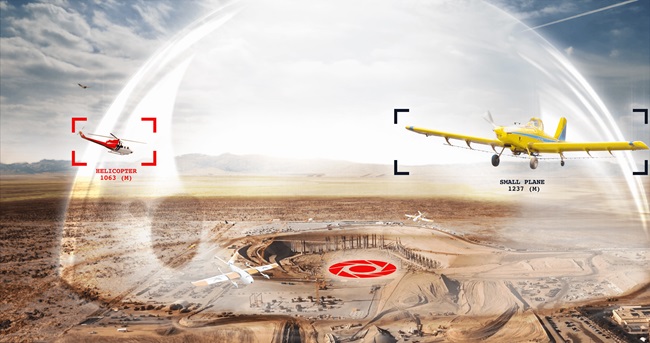Scout leads the way for low-cost ADS-B receivers
We're all used to seeing electronics bundled into smaller and smaller packages—but the Scout takes this to a new level.
The $200 ADS-B receiver designed to work with ForeFlight is about the size of a pack of chewing gum.
Part of the reason the Scout is so tiny is that it lacks an internal battery. It's powered through a mini-USB cable that can plug into any charging port. It connects wirelessly to an iPad or iPhone via Wi-Fi.
I was a passenger on the first leg, and I was feeling pretty clever because I'd managed to establish the Wi-Fi connection to an iPad running ForeFlight before the aircraft engine was even started.
The iPad didn't display weather data on the ground, and I assumed it was because we needed to be airborne for the Scout to connect to a ground station. Once airborne, however, it failed to show weather data, or traffic.
I wondered if the problem was the iPad, so I paired the Scout with an iPhone running ForeFlight, and it worked fine. Both weather and traffic appeared on the iPhone's small screen.
At our fuel stop 2.5 hours into the flight to Wisconsin, we found a Wi-Fi signal at the fixed-base operation and updated the ForeFlight app to version 9.2.
That was all it took. For the rest of the flight to Wittman Regional Airport, the Scout performed flawlessly showing ADS-B weather and traffic across the Midwest. The picture was colorful with intense convective weather both north and south of our path.
The Scout comes with two suction cups, and it's easy to place it in the aircraft so that it has an unobstructed view of the sky.
The Scout is marketed by ForeFlight and is meant to work only with that pioneering app that has come to dominate general aviation cockpits. So I was surprised to find that it actually provided weather information—but not traffic—to another iPhone running the rival Garmin Pilot app. (ForeFlight officials said the Scout might "appear to pair" with other aviation apps, but wouldn't provide a full weather or traffic picture.)
I didn't mind the Scout's lack of an internal battery. My flight bag has enough USB plug-ins, iPhone cables, and remote chargers to run a small city—or a college dormitory. But several times during flight the USB cable became disconnected from the Scout, so operators should take care to run the cables in such a way that they don't get bumped or inadvertently pulled on.
The Scout doesn't have some of the extras that pilots have become accustomed to in ADS-B receivers. There's no AHRS to provide synthetic vision, for example, such as those contained in later Stratus models, or Garmin GDL-39 3Ds
It's also being sold through online juggernaut Amazon, bypassing traditional pilot retailers such as Sporty's and Aircraft Spruce.
The Scout is a sleek, efficient, bare-bones ADS-B receiver that delivers the benefits of in-cockpit weather and traffic in a radically small package and a disruptively low price. The Scout's retail price is less than half the price of any comparable product, and it works extremely well.
Pilots have been clamoring for years for inexpensive ADS-B options. If that's the promised land, then the Scout (and its inventor, uAvionix) leads the way to it.



